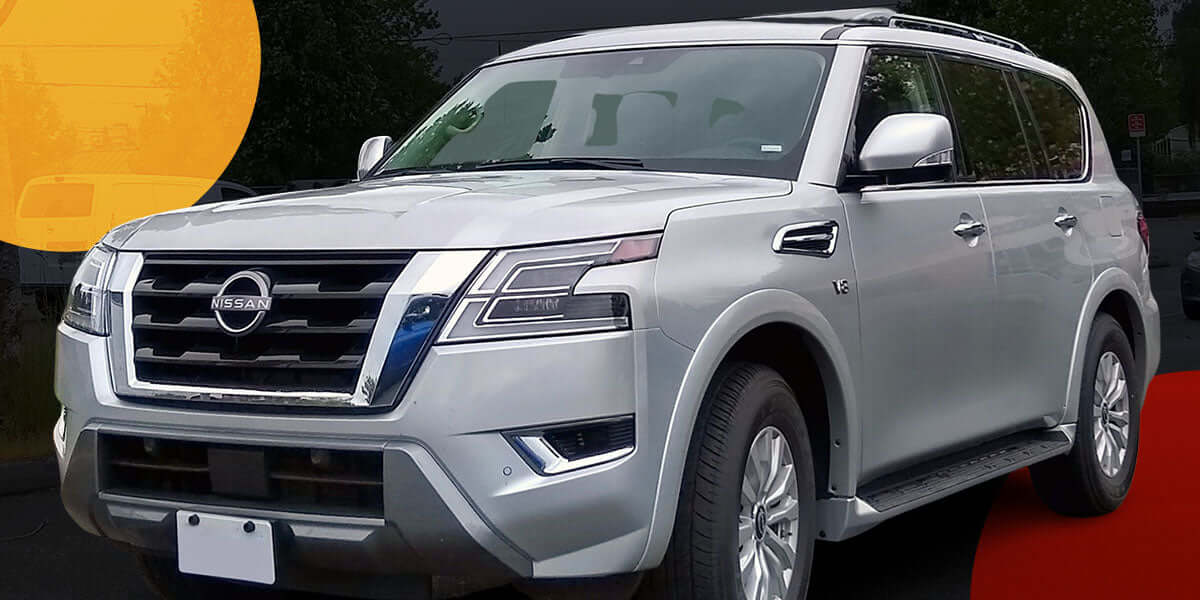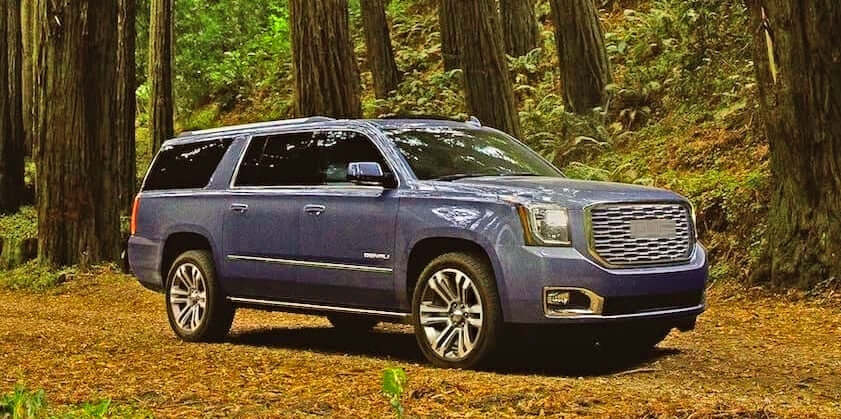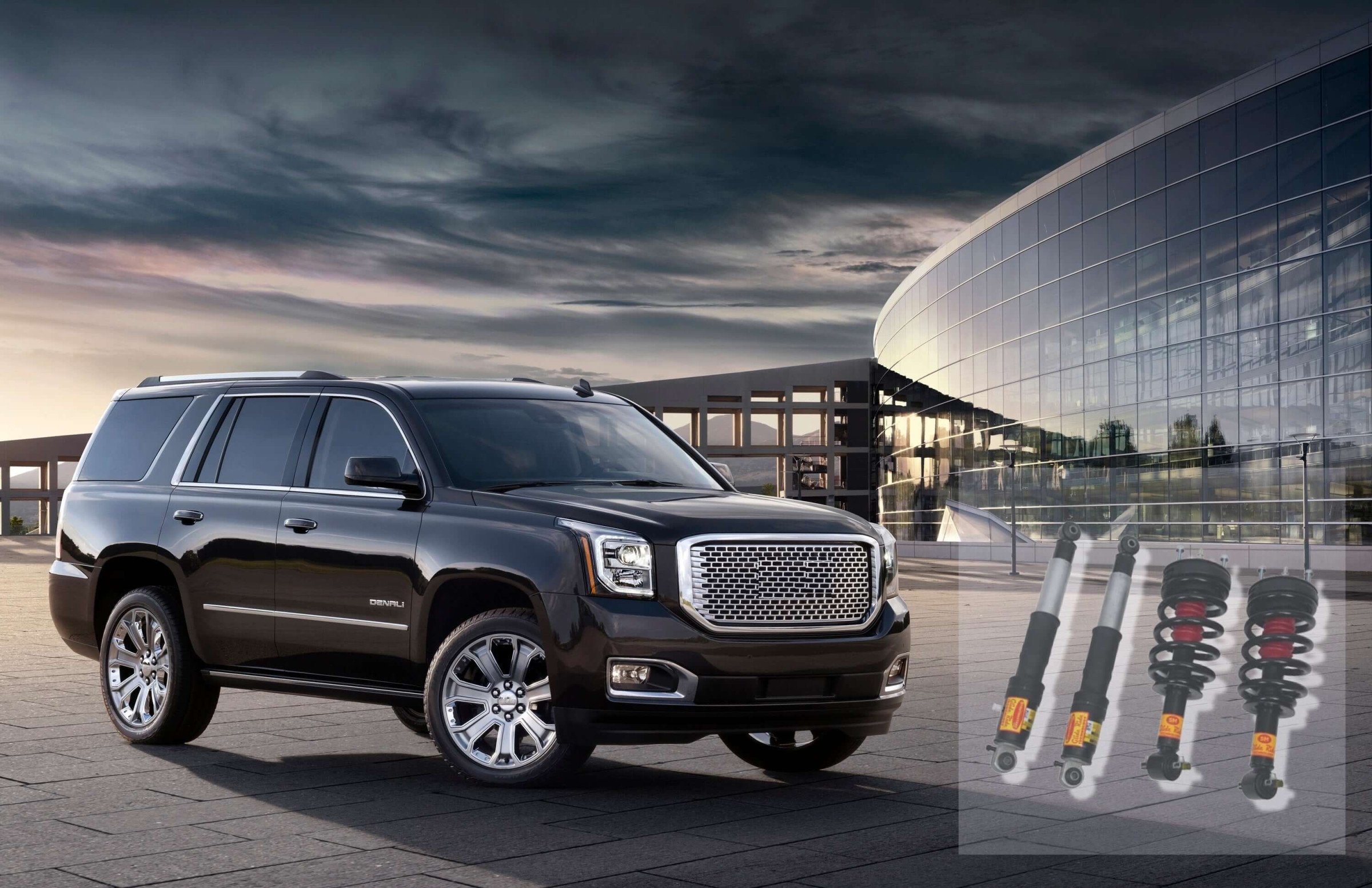The Nissan Armada is a big, luxurious family SUV based on the Japanese manufacturer’s popular Titan pickup truck. The first generation of the Armada came equipped with an active air suspension. This air suspension provided a smooth ride that helped give the interior a true feeling of luxury. The Armada’s air suspension has a network of sensors, airbags, control modules and a compressor to keep the ride inflated to the right height. This system works great — until one or more of the components goes out. But how will you know when something has gone wrong?
Your Armada has a suspension warning light that lets you know there is a problem with your vehicle. If your suspension warning light is on, immediately take it to your mechanic. However, there are some warning signs that your Armada air suspension is broken that you may spot before the light comes on. Before learning how to troubleshoot these problems, let us consider the common issues you will likely encounter.
Common Nissan Armada Suspension Problems
Here are six air suspension problems for Nissan Armadas you're likely to face:
- Control panel failure: Your Nissan Armada has an electronic control unit (ECU) or control module that regulates the air suspension system. The vehicle cannot rise and drop optimally when this computerized equipment fails. The best solution is to replace the ECU.
- Sensor faults: Your vehicle's manufacturer installs sensors in each wheel to collect data and transmit them to the ECU. These sensors move up and down as your drive. The continuous movement causes them to deteriorate over time.
- Air compressor failure: The air compressor generates pressurized air and pumps them through the springs to lift the vehicle where necessary. When the air compressor wears out, the amount and intensity of air reduce, which can affect the SUV's movements.
- Air spring failure: The air spring is in a constant “up and down” motion, which creates friction in the system. This friction causes the springs to wear out at the top and bottom. This prevents the vehicle from maintaining a proper height even when the ECU sends the instructions.
- Valve block failure: The valve block directs the air from the air compressor to the springs. When the valve fails, it is difficult for the compressed air to lift and drop the vehicle, affecting the entire suspension system.
- Airbag damage: The airbag stores the compressed air and releases it when the ECU directs. However, the airbag may leak or bust due to punctures and dry rot. When this happens, the suspension would not have enough air to perform its functions.
Troubleshooting Nissan Armada Air Suspension Problems
Here are four signs of Nissan Armada suspension problems:
1. Sagging in the Rear or One Corner
When one of the airbags is broken, punctured or torn, it will be unable to properly support the weight of the vehicle at that corner. Typically, it is the rear airbags that break down first. That is why a sagging back end of the car is one of the most common signs of air suspension failure.
You may also notice that one corner of the Armada is dipping down. This also indicates a problem with the airbags. Airbags are made of a flexible rubber and plastic blend. They must be flexible to function correctly. The problem is that these materials are not meant to last forever, especially in harsh weather conditions.
Over time, it is natural for the airbags to crack, puncture or otherwise wear out, usually at the same rate. Because of this, it is a good idea to replace all of them simultaneously.
2. Noisy Compressor
The air compressor in your Armada generates pressurized air. It then pumps this air into the airbags to keep the car at the proper ride height. You will typically not hear or notice the compressor. If you do, it most likely indicates a problem. When a compressor runs too long or works too hard, it shows that the suspension system is having trouble inflating the air springs. That could mean that there is a problem in any number of places.
First, there could be a puncture in the airlines which carry the pressurized air from the compressor to the air springs. Second, there might be a puncture in one of the airbags. There could also be a computer malfunction in the control module. Finally, the problem could be with the ride height sensors.
3. Nose Dive
One of the many functions of your suspension is to spread out the force of the car stopping across the entire vehicle. When it works properly, the car will come to a smooth and even stop. If your Armada seems to be lurching or jerking forward when coming to a stop, there is probably an issue with your suspension.
When the suspension wears down, it cannot provide as much resistance to the weight of the car coming to a stop. Therefore, the car's body will continue to move forward while the wheels are stopped. This results in what is commonly known as the “nose dive.” The rear end of the car pops up while the front end of the car dives down. If you notice this in your Armada, you likely have suspension issues.
4. Long Stopping Distance
As we mentioned before, much of the force of stopping your vehicle is absorbed by your suspension. If the suspension is not working correctly, it becomes more difficult for your Armada to come to a complete stop. The car asks your brake calipers to hold much more weight than before.
This will result in a noticeable increase in stopping distance. You can see why properly functioning suspension in your Armada is essential. It can be the difference between getting into an accident and safely avoiding one.
Why the Nissan Armada Suspension Fails
Here are the four leading causes of Nissan Armada air suspension failure:
1. The Armada Is a Big Vehicle
First things first, the Nissan Armada is an absolute unit. Weighing in at just over 5,500 pounds unloaded, the car asks a lot of its suspension before you even start the ignition. Once you start loading the vehicle with cargo and passengers, you can reach close to 7,000 lbs. That is a lot of weight, and even the most robust air suspensions will eventually give out. You can bet that after city driving, hauling things, road trips and more of the normal wear and tear, the original suspension has taken a beating.
2. Complicated Systems
Air suspensions are known as “active” suspensions because they respond to changes in the road. To do this, the Armada employs a series of ride height sensors. These measure changes in the height of the vehicle. These changes are then reported to the control module, a tiny computer controlling the suspension.
The control module determines how much air is needed in the air springs and sends that signal to the compressor, a complex process. The compressor uses another controller to determine how much air is going to which spring. This air travels through a series of flexible tubes to inflate the springs.
In addition to being highly complicated, the system relies on all parts being fully functional. When one component goes down, the rest are asked to pick up the slack, which can lead to early failure.
3. Weak Air Suspension Components
Air suspensions require several flexible components to work. The hose that carries the pressurized air is made of plastic, and the air springs are made of flexible rubber.
In addition, the Nissan Armada air suspension requires moving parts like those in the air compressor or the ride height sensors. Moving parts wear down — it’s in their nature. Compared to passive struts, which use no moving parts, air suspensions are guaranteed to wear out.
4. High Cost of Maintenance and Repairs
Though the Nissan Armada air suspension provides a fantastic ride, they will fail at some point. Repairing or replacing parts on your air suspension can be extremely costly, as most parts are very specialized and difficult to deal with. Not to mention once one part fails, it can place added strain on the rest of the suspension and cause premature failure of other components.
Replacing all the components in your rear air suspension could cost you upwards of a thousand dollars for parts alone — and that’s if none of the electronics need replacing. Those could set you back at least another few hundred, if not more. This might leave many owners in a jam, with parts and labor to replace the rear air suspension approaching the value of an older Armada. Your otherwise perfect car might be cost-prohibitive to maintain.
What to Do About Your Failing Armada Air Suspension
There are two ways you can fix your Nissan Armada problems:
1. Replace With Original Parts
As indicated earlier, the air suspension system on your Nissan Armada is comprised of a series of connected components working together to provide that smooth experience. So it helps to replace the entire system if you notice any defect for optimal performance. However, there are some challenges with this approach.
Replacing one part without the others may cause a subsequent chain of damages, considering that the components are interconnected. This can be a costly exercise. The OEM replacement cost could amount to over $1600, while the aftermarket replacement cost could be over $1200, excluding electrical components, such as the height sensors.
Again, the components only last for a limited period. That means you must replace them regularly, depending on how you use and maintain the vehicle.
2. Convert to a Traditional Coil Spring System
The traditional coil spring system is an efficient, affordable and reliable alternative for most Nissan Armada users today. For about the cost of a new compressor or two air springs, you can replace your Armada’s entire air suspension with a brand-new coil suspension designed to last many years.
Unlike that faulty air suspension, the Strustmasters conversion kit utilizes real mechanical force to support and stabilize your Nissan. There are no moving parts to wear down and no flimsy materials to crack, snap or break. Best of all, it’s not too difficult to install. You probably have all the tools you need at home already! It’s a simple solution you may not have considered.
Shop Nissan Armada Suspension Conversion Kits
Air suspension problems are common in most vehicles — your Nissan Armada is no exception. Modern suspension systems are made of interconnected moving parts that rely on each other to ensure the car maintains the appropriate height. When one part fails, it often affects the associated components, which can be expensive to replace.
Strutmasters offers the best solution — a high-quality suspension conversion kit that uses passive shocks and coil springs for less than the price of the replacing one original equipment air spring. Our engineers have spent countless hours ensuring they are correctly tuned and rated to provide the perfect ride. That’s what Strutmasters’ patented GlideRide Technology is all about.
Do you want to learn more about our products? Contact us today!








